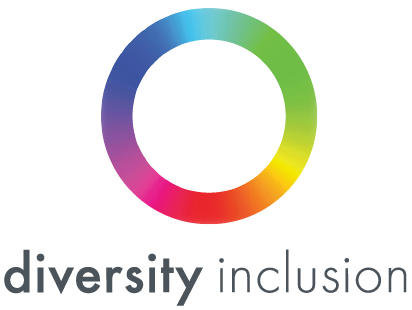The difference between diversity and inclusion and why they are best together
‘Diversity and inclusion’ - it’s a buzz-phrase that’s commonplace in our lexicon. But do you actually know what this means? Many people use these words interchangeably, but both ‘diversity’ and ‘inclusion’ mean vastly different things and require unique workplace strategies.
This article provides insights into what these concepts mean, as well as powerful strategies that reveal how you can best cultivate each in your workplace.
What does workplace ‘diversity’ mean?
Gaining popularity in the 1980’s, the concept of workplace ‘diversity’ initially referred to demographic characteristics such as race, ethnicity and gender. However, later this definition was broadened to include other characteristics such as education level, language, and value systems.
Diversity today can be defined as ‘The spectrum of human similarities and differences that are encompassed within the workplace including age, gender, sexual orientation, physical ability, mental health, socio-economic status, race/ethnicity, religious and spiritual orientation and work/family concerns.’
The scope of diversity that exists in organisations today is vast. However, this does not guarantee inclusion. In fact, high levels of workplace diversity, which are not managed or cultivated, often result in less inclusive organisations. This is because it can result in the formation of small diverse groups, and social division¹, with the potential to drive negative performance outcomes for the team.
What does workplace ‘inclusion’ mean?
The concept of ‘inclusion’ has become more popular in recent times, primarily driven by the realisation that hiring diverse talent did not ensure a collaborative and productive workforce. It became clear that what organisations practice and enforce after recruitment, is a greater determinant of success.
Although greater diversity has been associated with more positive organisational outcomes, ‘inclusion’ is the key that unlocks the potential of a diverse workforce. So, what is ‘inclusion’ really?
Inclusion today can be defined as ‘a sense of belonging and being one’s ‘whole self’ at work, feeling respected and valued for who you are, and feeling support and commitment from others so that you can do your best work.’
Why diversity and inclusion are two peas in a pod
There is now a range of empirical research to support the benefits of both workplace diversity and inclusion (D&I). But driving effective workplace D&I is still a challenge for many organisations. Why?
Not only do many businesses still find it easier to build a workforce of those who are ‘like us,’ but for those organisations who commit to building a diverse workforce, their efforts are often focussed solely on acquiring different skills, perspectives, and backgrounds. They fail to recognise that the value of that diversity of thought and experience can only be unlocked in an inclusive environment, where individuals feel accepted, safe and valued. Therefore, inclusion becomes increasingly important when there is a push for diversity in a workplace.
The key lies in developing a strategy where D&I can operate in symbiosis, to best capitalise on the benefits that D&I provides.
How to cultivate diversity and inclusion in your workplace
It is crucial to create a workplace program that incorporates both D&I in tandem, but unfortunately, there is no perfect formula for effectively fostering D&I in an organisation.
What we do have are 2 powerful areas of focus to kickstart your D&I program, and get you thinking about your D&I strategies in a new light.
Inclusion secret #1 – Structural inclusion strategies
Structural inclusion refers to organisational systems and processes. There are two primary structural approaches: 1) Building leaders’ competencies to foster greater inclusion and psychological safety. 2) Policies and practices that encourage, enable and support D&I behaviours. Effective strategies can include:
Supporting leaders to build their sponsorship behaviours and sponsoring diverse talent
Flexible work strategies that span policy development, flexible work implementation, customised training for managers, and support services for remote staff. A flexible working ethos is key to building a more inclusive culture where people of all different life circumstances can best contribute to the organisation
‘Calling out’ inappropriate behaviours including bullying, harassment, and discrimination. By having zero tolerance to inappropriate behaviours in the workplace, respectful, constructive, and supportive behaviours can be more effectively fostered, driving a high-performance and inclusive culture
Regularly acknowledging and celebrating different elements of diversity within the workplace.
Inclusion secret #2 – Psychological safety strategies
Creating an environment of psychological safety supports all employees to contribute to their full potential, thereby capitalising on the benefits of diversity. Some examples of inclusive behaviours, to drive psychological safety, include:
Managers and leaders being deliberate in seeking the input from all employees
Adopting a ‘learning mindset’ where failure instead of being seen as a negative, are approached as an opportunity to learn and improve performance
Taking care with the language we use with one another by choosing words and language that encourage collaboration and openness rather than a telling or dismissing approach
Seeking to achieve high quality connections with our co-workers
As we’ve seen, diversity and inclusion are distinct concepts, each driving their own benefits in the workplace. However, when they operate in partnership, the best and most successful outcomes can be realised.
We understand that building a diverse and inclusive culture can take time, but the benefits emanating from a rich collaboration of ideas and experiences can be transformational, for both individuals and organisations.
Interested in developing D&I strategies that really work? Chat to us!
1Diversity at Work: The Practice of Inclusion, edited by Bernardo M. Ferdman, et al., John Wiley & Sons, Incorporated, 2013.
³Miller, F., & Katz, J. (2002). Inclusion breakthrough: Unleashing the real power of diversity. Berrett-Koehler Publishers.
